Snowflake generation: the evolution of Tudor
By artfully mining its heritage, Swiss watch brand Tudor has created a new design identity that’s all its own
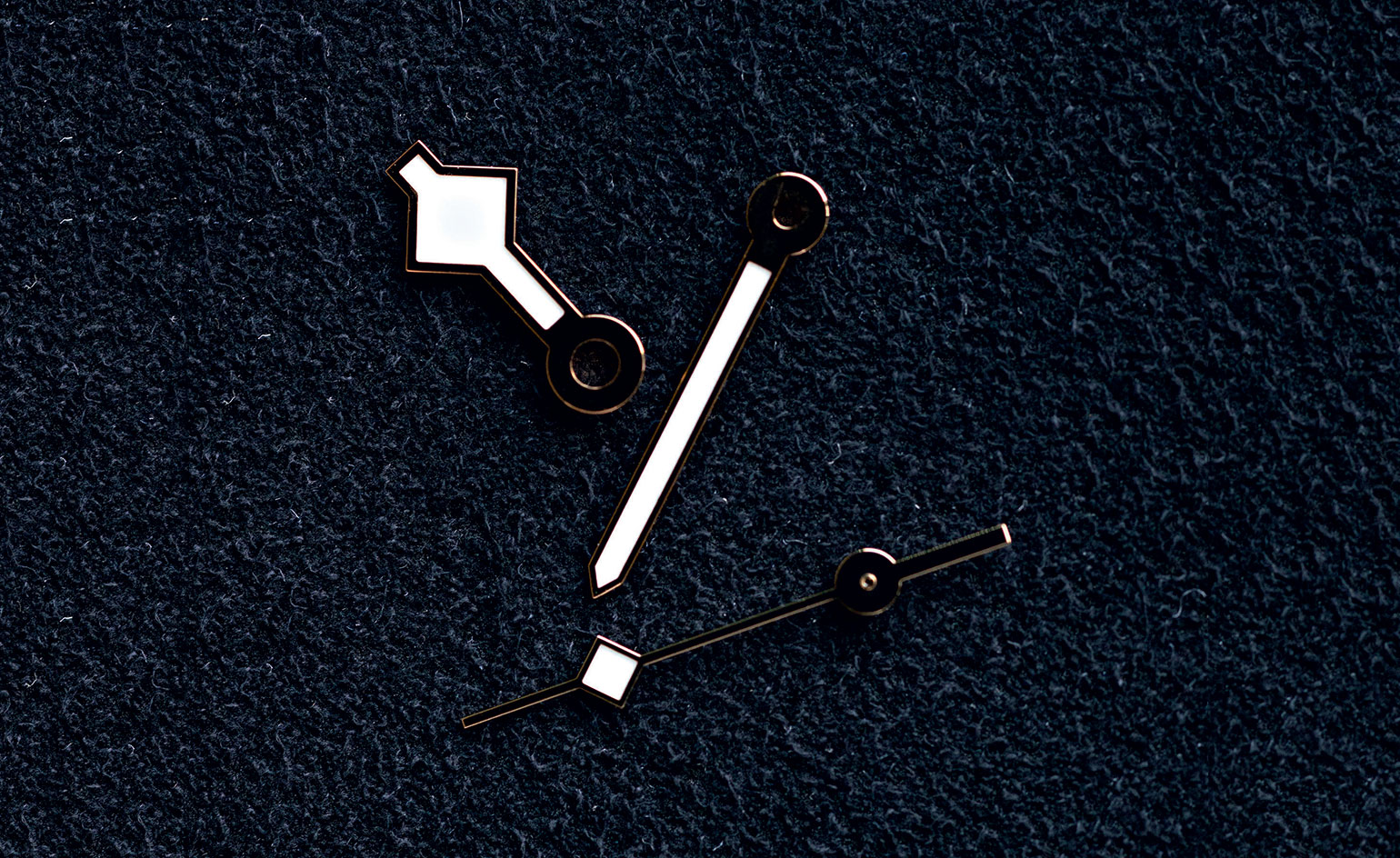
In 1969, unique ‘snowflake’ hands began to appear on Tudor’s Submariner diving watches. Today, the wide hands, resembling a magnified snowflake particle, are a powerful graphic signifier of a Black Bay, the brand’s biggest-selling design, and of Tudor’s wider resurgence. Others in the ‘snowflake’ series include the Black Bay Fifty-Eight and this year’s Black Bay GMT. The Pelagos steel bracelet models also take the snowflake hands, but the Black Bay owns them, so to speak.
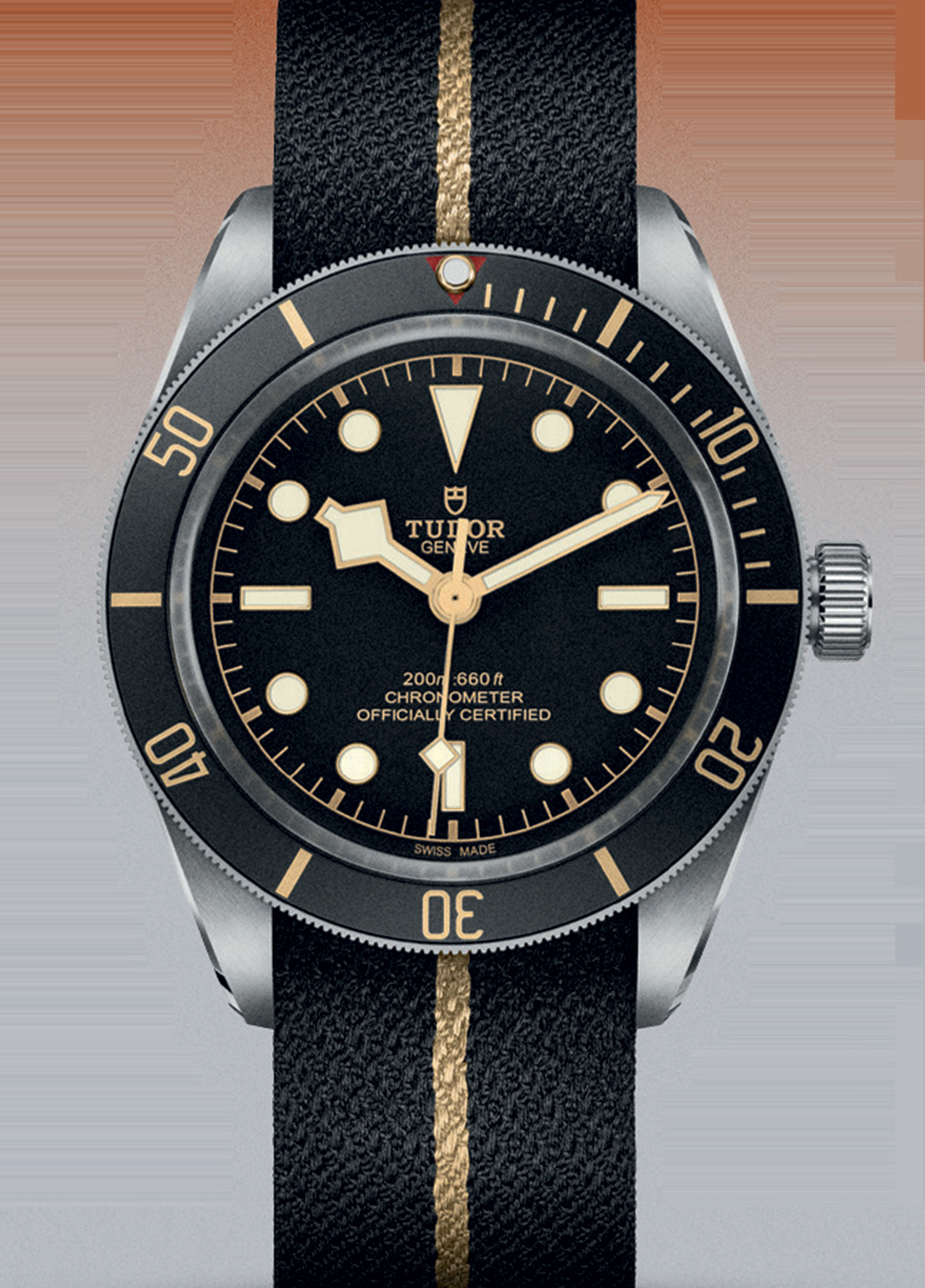
A 2018 Tudor Black Bay Fifty-Eight model with a Jacquard fabric strap by Julien Faure.
This quirky detail has been singled out as a mainstay of Tudor’s contemporary offering by Rolex and Tudor CEO Jean-Frédéric Dufour, whose vision chimes with that of Hans Wilsdorf, who established Rolex in 1905. Wilsdorf had long toyed with the idea of producing a watch ‘at a more modest price than our Rolex watches, and yet one that would attain the standard of dependability for which Rolex is famous’. In 1926, he acquired the exclusive rights to the Tudor trademark from Swiss watchmaker and dealer Veuve de Philippe Hüther and continued to make watches under that name. Wilsdorf, a savvy marketing man, waited for the right moment to implement his original vision of a more affordable alternative to Rolex. In 1946, the year after the end of the Second World War and with desire for luxury goods in an understandable slump, he launched the Tudor brand.
Early advertising campaigns, featuring a road builder and a coal miner, reveal Wilsdorf ’s economic target – the blue-collar worker. A Tudor watch was all about precision, robustness and desirability. In the late 1950s, Tudor began to focus on performance watches, auspiciously creating sports watches that was suited to everyday wear. It is the arena where it excels today. The current versions of 1970s Heritage Chrono and Heritage Ranger designs retain classic sporty appeal. Attempts at a sleeker, finer Tudor offering, such as this year’s unisex 1926, seem unconvincing in comparison.
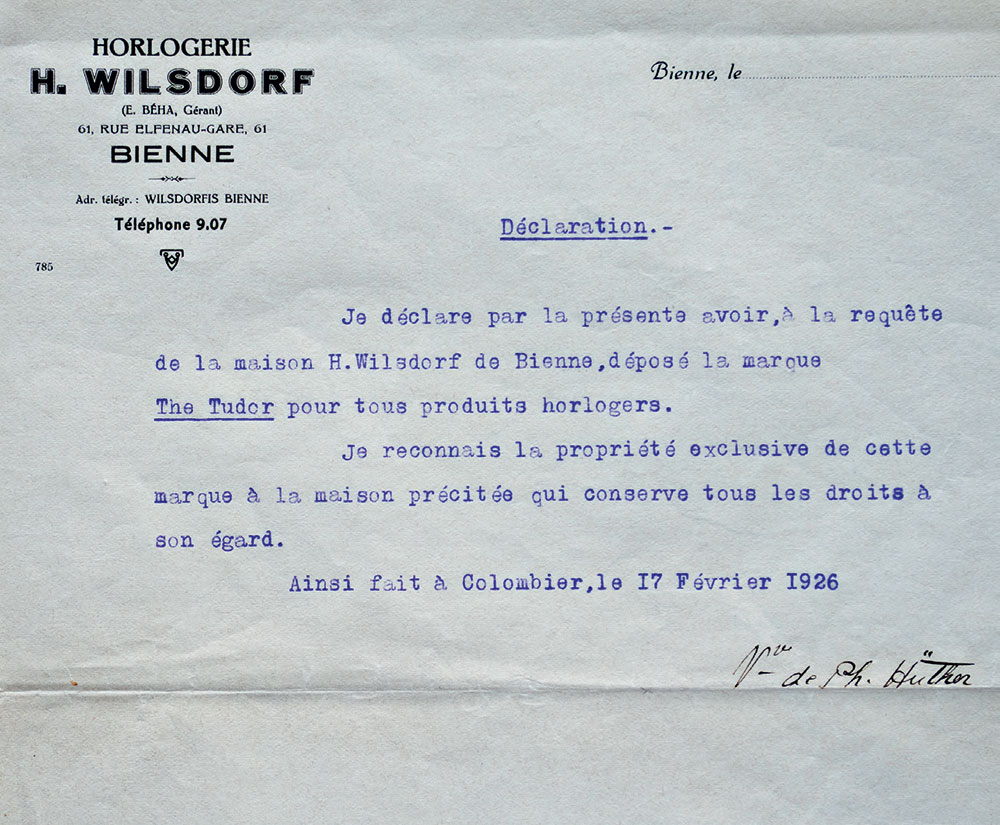
The archive registration letter showing Wilsdorf’s acquisition of rights to the use the Tudor name.
Tudor’s recent revival has been carefully engineered. While the brand has maintained a steady presence in France, Germany and Hong Kong, Tudor was pulled from major US and UK markets at the end of the 1990s as distributors focused on flashier propositions. But, mirroring its founder’s earlier response to more austere times, the brand was relaunched in the US in 2010 and the UK in 2014.
RELATED STORY
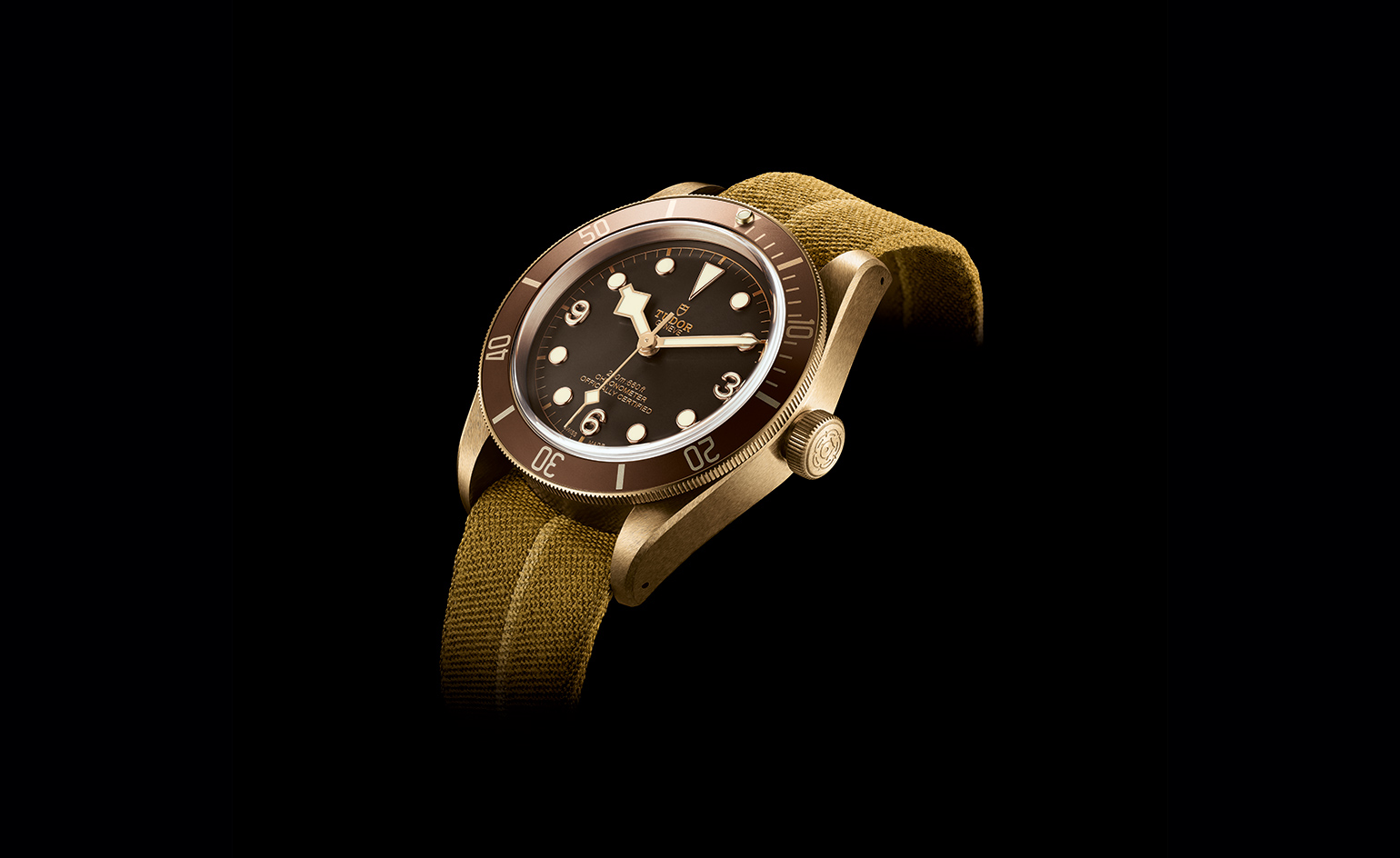
Now, it is presciently in tune with the market. Tudor watches are gaining traction with new audiences, from younger buyers to those who eschew conspicuous luxury for well-priced quality. And, they are increasingly appearing on the international watch auction circuit, which has traditionally been the preserve of ‘finer’ brands.
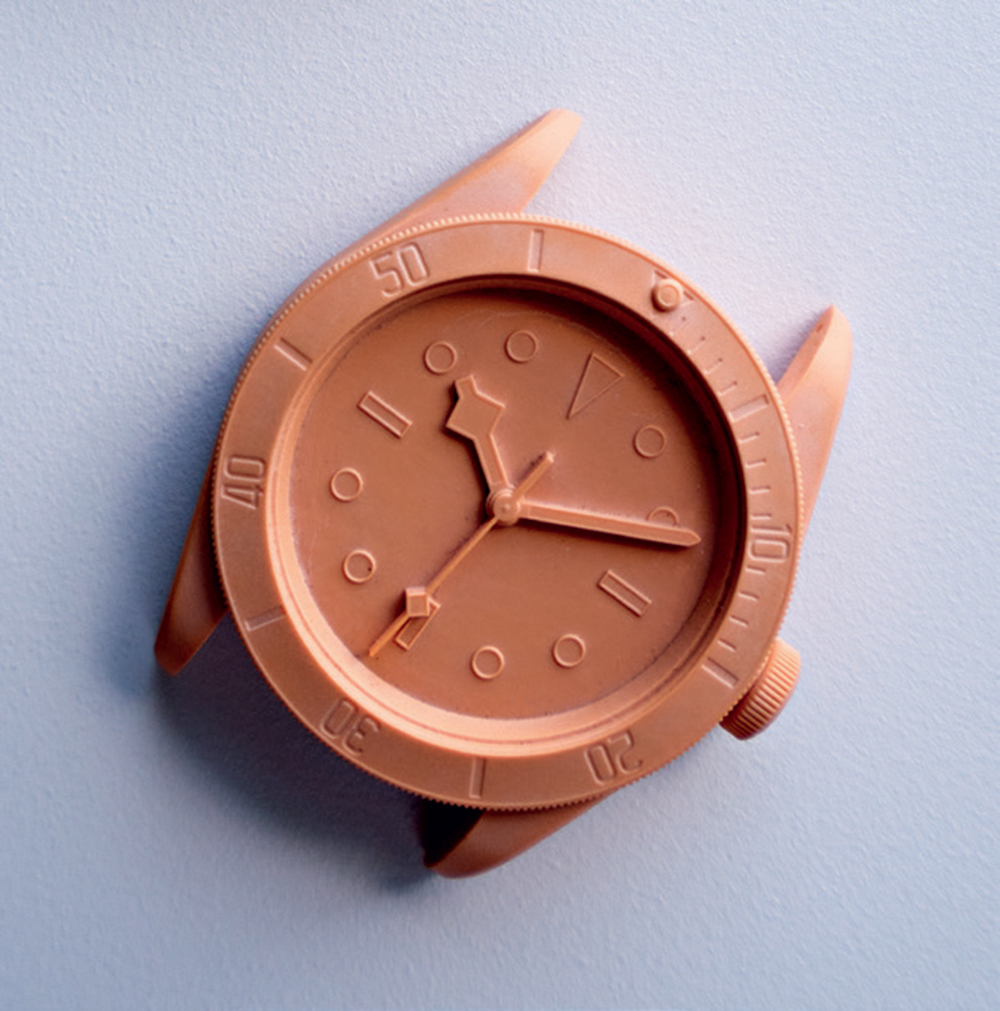
A hand-modelled Black Bay prototype.
Says Penny Morris, head of watches at Bonhams Knightsbridge, ‘Tudor has a long history and relaunching vintage-inspired models shows that it recognises this strength. Buyers want to know that what they are buying has a story. This drives young collectors, who perhaps may not yet have the disposable income to pursue watch icons, such as the Valjoux-based Rolex Daytonas, to brands such as Tudor, who are interesting in different ways.’
The ‘no-design’ approach of Tudor’s head designer Anders Ugarte suits the brief to a T. ‘It looks easy because you have a strong starting point,’ he says. ‘But vintage pieces have a strong personality, so you have to find the right contemporary progression.’ That could be a matter of altering a case diameter and height to achieve a slimmer or bolder silhouette. Matching the dial and bezel colours is another tricky area because, as Ugarte says, ‘each material means light and colour appear in different ways’.
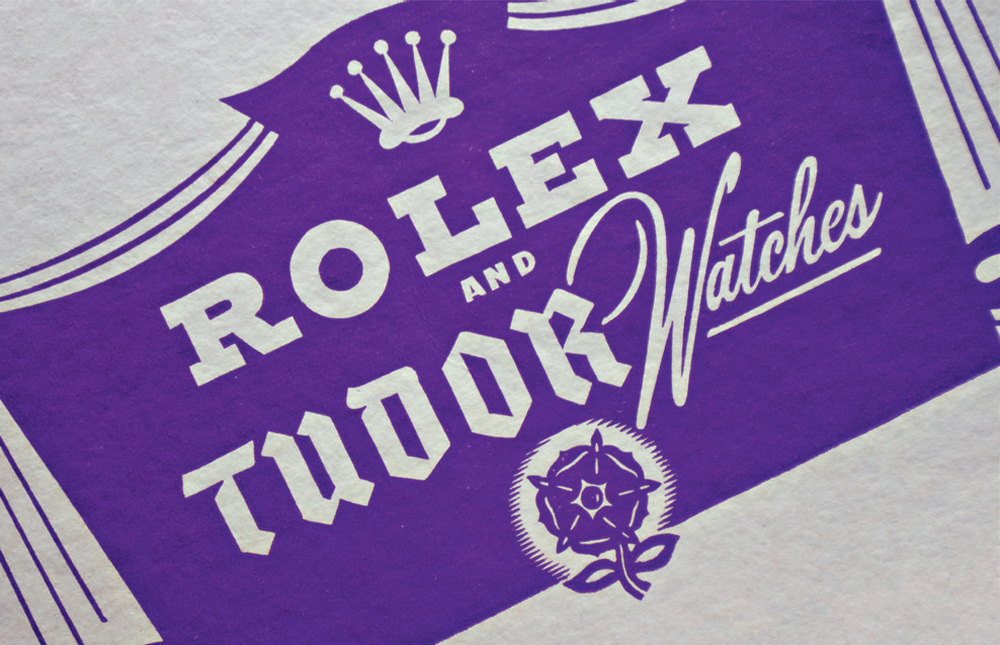
An early advertisement features the Tudor Rose emblem, which appeared in various iterations throughout the brand’s early history until it was replaced by a medieval shield in 1969.
This month, Tudor is launching a new watch. The brand confirms that it is based on a heritage piece but that it is not a Black Bay. Tudor collectors have a sharp instinct for these things, but for the rest of us, Ugarte only has this to say: ‘Whenever I look at the archive, I quickly forget the details. It is only then that I can start to build a new watch.’
As originally featured in the December 2018 issue of Wallpaper* (W*237)
Receive our daily digest of inspiration, escapism and design stories from around the world direct to your inbox.
INFORMATION
For more information, visit the Tudor website
Caragh McKay is a contributing editor at Wallpaper* and was watches & jewellery director at the magazine between 2011 and 2019. Caragh’s current remit is cross-cultural and her recent stories include the curious tale of how Muhammad Ali met his poetic match in Robert Burns and how a Martin Scorsese Martin film revived a forgotten Osage art.
-
 How We Host: Interior designer Heide Hendricks shows us how to throw the ultimate farmhouse fête
How We Host: Interior designer Heide Hendricks shows us how to throw the ultimate farmhouse fêteThe designer, one half of the American design firm Hendricks Churchill, delves into the art of entertaining – from pasta to playlists
-
 Arbour House is a north London home that lies low but punches high
Arbour House is a north London home that lies low but punches highArbour House by Andrei Saltykov is a low-lying Crouch End home with a striking roof structure that sets it apart
-
 25 of the best beauty launches of 2025, from transformative skincare to offbeat scents
25 of the best beauty launches of 2025, from transformative skincare to offbeat scentsWallpaper* beauty editor Mary Cleary selects her beauty highlights of the year, spanning skincare, fragrance, hair and body care, make-up and wellness
-
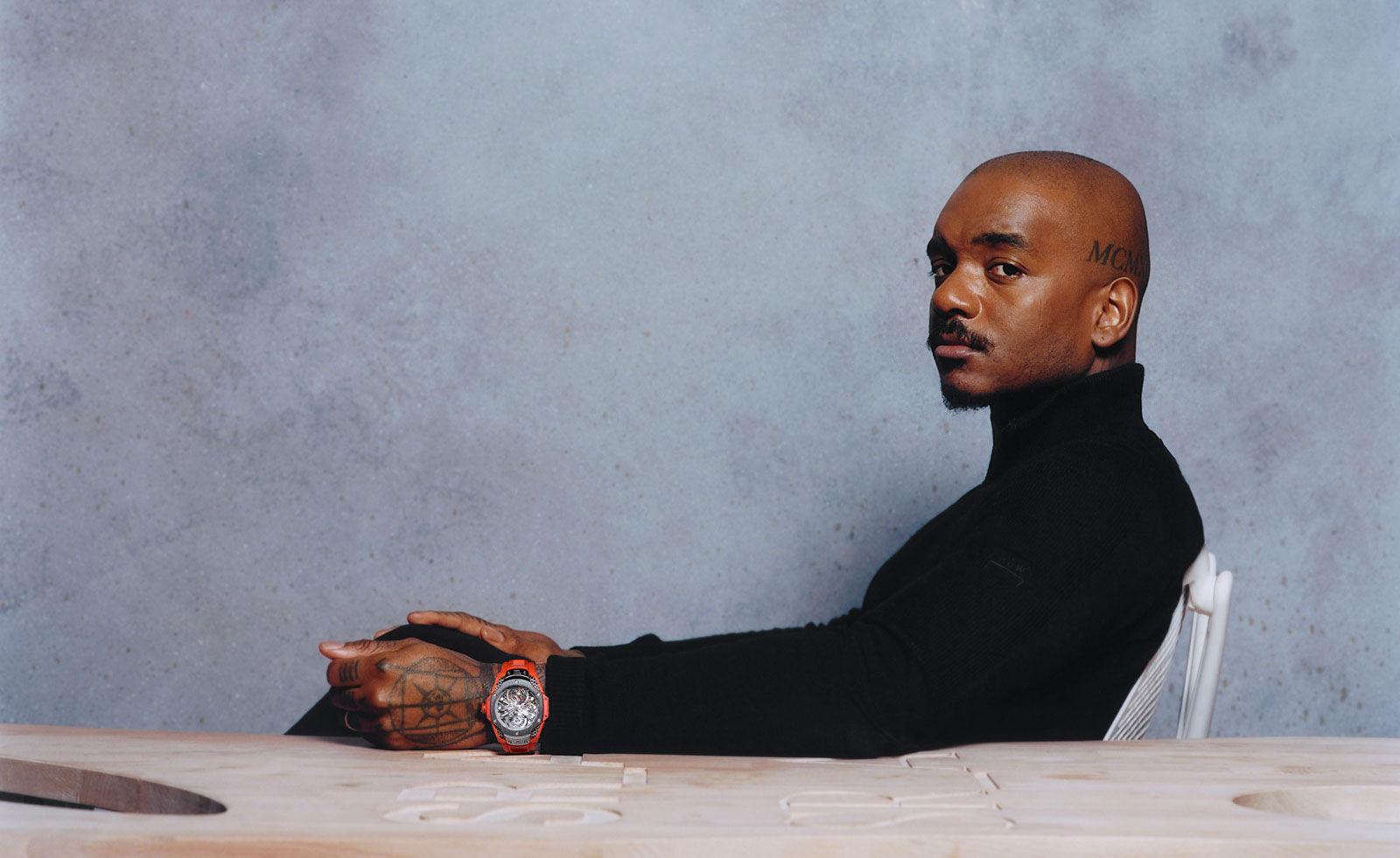 Samuel Ross unveils his Hublot Big Bang watch design
Samuel Ross unveils his Hublot Big Bang watch designSamuel Ross brings a polished titanium case and orange rubber strap to the Hublot Big Bang watch
-
 Playful design meets chic heritage in the Hermès Kelly watch
Playful design meets chic heritage in the Hermès Kelly watchThe new Kelly watch from Hermès rethinks the original 1975 timepiece
-
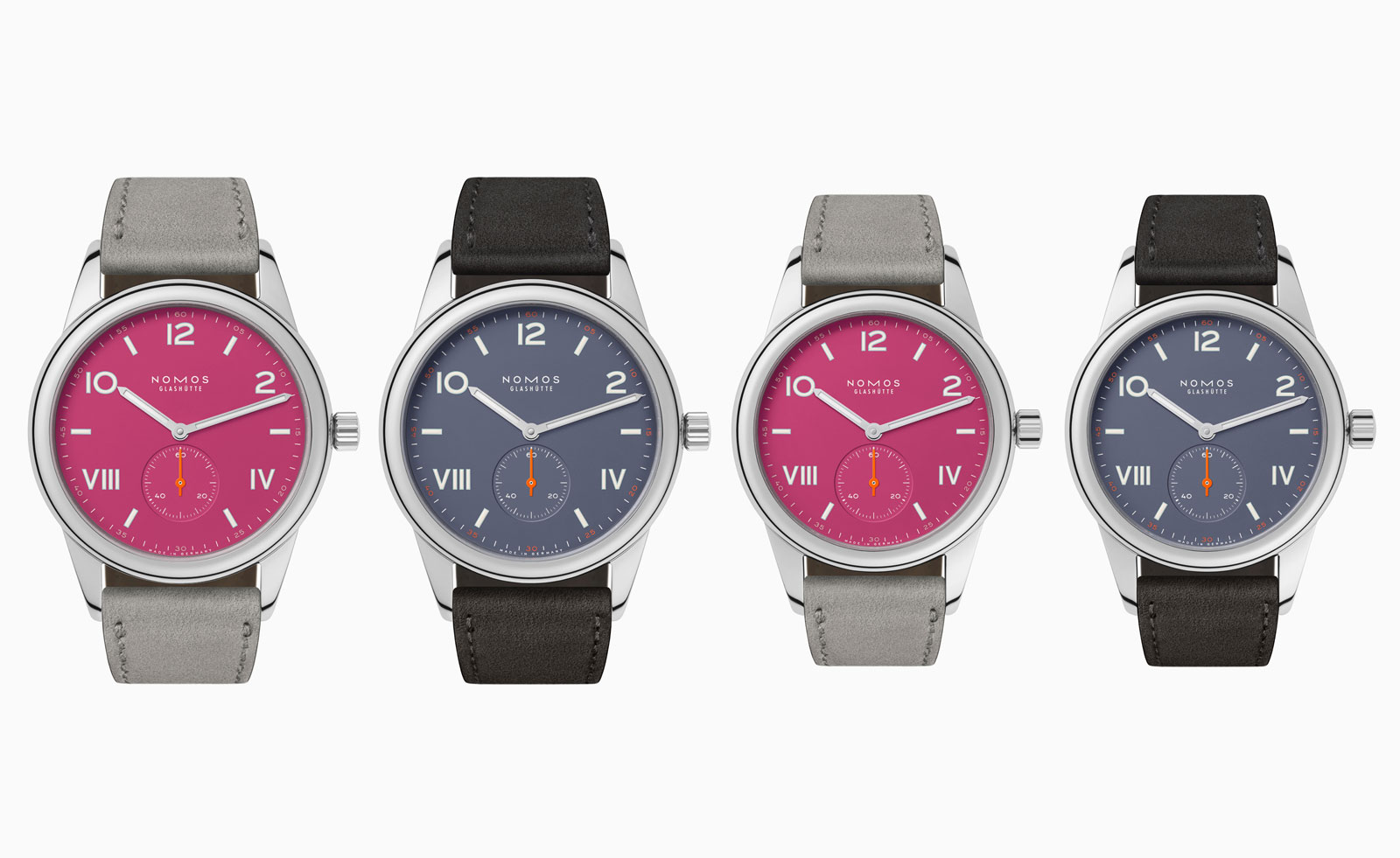 Discover the tonal new hues of the classic Nomos Club Campus watch
Discover the tonal new hues of the classic Nomos Club Campus watchThe Nomos classic wristwatch Club Campus now comes in two new collegiate colours. The perfect graduation gift from the Glashütte manufacture
-
 Bulgari unveils the thinnest mechanical watch in the world
Bulgari unveils the thinnest mechanical watch in the worldThe new Bulgari Octo Finissimo Ultra watch is a record-breaking feat of engineering
-
 Breitling and Triumph unite on a racy new watch and motorcycle
Breitling and Triumph unite on a racy new watch and motorcycle1960s design codes are infused with a contemporary edge in the collaboration between Breitling and Triumph
-
 Gerald Genta’s mischievous Mickey Mouse watch design is rethought for a new era
Gerald Genta’s mischievous Mickey Mouse watch design is rethought for a new eraThe Gerald Genta Retrograde with Smiling Disney Mickey Mouse watch pays tribute to Genta’s humorous design codes
-
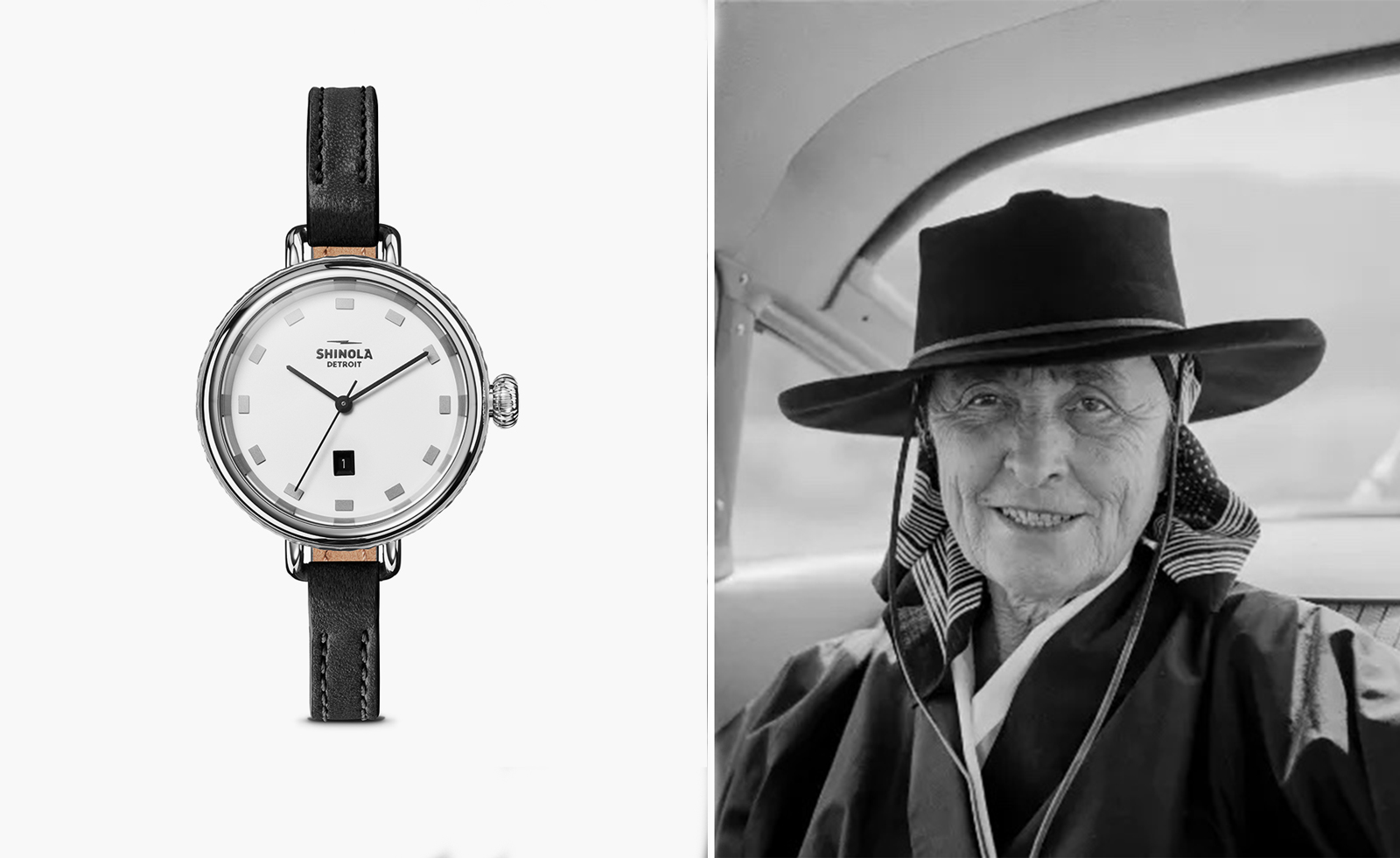 Shinola honours Georgia O’Keeffe with a new watch
Shinola honours Georgia O’Keeffe with a new watchShinola Birdy watch stays faithful to the minimalist codes of Georgia O’Keeffe’s painting, My Last Door
-
 Bulgari’s new book celebrates women and high jewellery
Bulgari’s new book celebrates women and high jewelleryBulgari Magnifica: The Power Women Hold, published by Rizzoli New York, takes a closer look at the female muses who inspired the spectacular Magnifica high jewellery collection